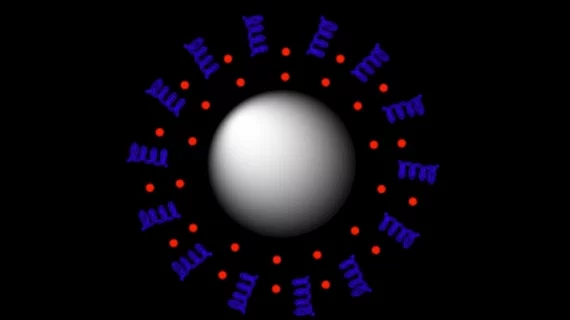Focused ultrasound method releases drugs millimeters from targeted brain areas
Using focused ultrasound, researchers from the Stanford University School of Medicine in California have developed a non-invasive method that helps deliver drugs to within a few millimeters of a targeted area of the brain, according to a study published online Nov. 7 in the journal Neuron.
Researchers led by Raag D. Airan, MD, PhD, an assistant professor of neuroradiology at Stanford demonstrated that active amounts of a fast-acting drug could be released from nanoparticle “cages” injected into the blood stream, according to researchers. These nanoparticles in small areas of rat brains were then targeted by beams of focused ultrasound which reduced overall neural activity.
By turning up the ultrasound intensity and monitoring brain-wide metabolic activity, the researchers were able to noninvasively map out connections among different neural circuits in the living rat’s brain.
“While this study was done in rats, each component of our nanoparticle complex has been approved for at least investigational human use by the Food and Drug Administration, and focused ultrasound is commonly employed in clinical procedures at Stanford; we’re optimistic about this procedure’s translational potential,” Airan said in a prepared statement.
For the study, the researchers lowered the intensity of the focused ultrasound to at least one-tenth of that used in standard clinical ablation procedures. Ultrasound was then delivered in a series of short pulses to the rat brains, which the researchers saw caused no damage to brain tissue.
Airan and colleagues injected nanoparticles into the rat brains and analyzed the focused ultrasound’s potential for targeted drug delivery. Nerve cell activity was measured in the visual cortex, an area in the back of the brain that’s activated by visual stimuli, in response to flashes of light aimed at the rats’ eyes, according to the researchers.
The ultrasound beam was then focused on the brain’s visual cortex, which decreased in electrical activity the more the ultrasound increased in intensity.
The researchers found that in the motor cortex of the brain, the electrical activity did not decrease when ultrasound was applied to the that area. However, when the ultrasound targeted the lateral geniculate nucleus, which relays visual information to the visual cortex, it did reduce electrical activity in the visual cortex.
Lastly, the team monitored the brain-wide metabolic response to focused ultrasound using PET to measure brain-wide uptake of a radioactive analog of glucose in the rats.
With propofol-loaded nanoparticles, the rats' metabolism dropped which ultimately caused neural activity in the regions exposed to ultrasound, and continued to decrease with increasing ultrasound intensity.
“We hope to use this technology to noninvasively predict the results of excising or inactivating a particular small volume of brain tissue in patients slated for neurosurgery,” Airan said.

